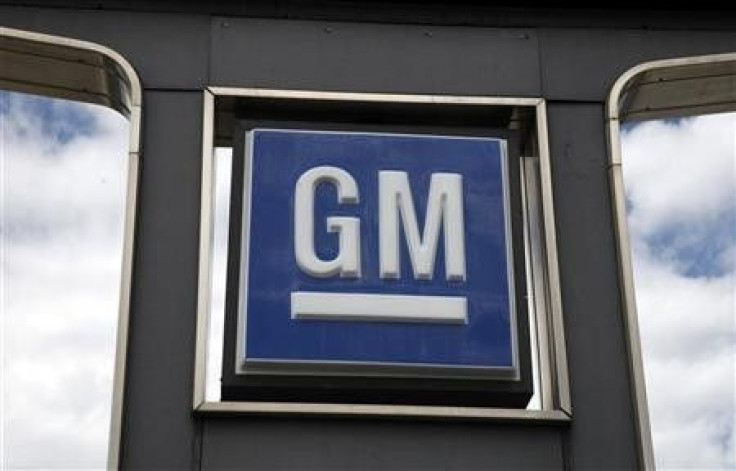GM Turns to China to Crack India's Tough Car Market

General Motors Co began initial production of its first ever Chinese-designed car for the Indian market this week, a major step for the U.S. automaker as it tries to scale up in a market where foreign companies have struggled.
India's love for the small car and its highly-competitive, price-sensitive market has confounded many of the world's major automakers, who wrestle with lacklustre market shares against small car focused brands selling India-specific models.
The compact Sail, sold as a sedan and hatchback, will go on sale next month as the first model designed by GM's Chinese partner SAIC Motor Corp, the president of GM India told Reuters in an interview at a factory in western India.
"What (SAIC) bring to us is more of a regional focus and more of an emerging market focus," GM India's Lowell Paddock said. "Sail is in some ways perhaps the first vehicle designed with primarily Asian customer requirements."
SAIC holds a 50 percent stake in the Indian unit. A larger passenger van from SAIC's stable will begin production in India by the end of 2012.
Unlike in China, where GM and Volkswagen AG top the passenger vehicle market with a combined 30 percent share, all foreign automakers combined -- excluding Hyundai -- account for less than 25 percent of the Indian market, despite billions of dollars in investment and decades of toil.
Cars designed for customers and segments in other countries have failed to capture the hearts of India's demanding car buyers, leaving companies such as GM, Volkswagen and Ford with forecourts filled with ill-suited models and falling capacity utilisation at their plants.
GM needs a shot in the arm. Its India sales fell an annual 11 percent in the first six months of 2012, against a 10 percent rise in overall car sales, according to data from the Society of Indian Automobile Manufacturers.
The factory producing GM's Sail had previously been forced into production shutdowns and downsized shifts as sales slump.
Paddock acknowledges the company has "underperformed".
"We've had an under-representation in the growing segments," he said. "As the market moved, we were left with a void."
SEEKING A GAME-CHANGER
When Paddock joined GM in 1992, India's roads were dominated by small, low-powered Maruti Suzuki hatchbacks for the simple reason that there was little else on offer.
Twenty years later, the same models still account for close to half of India's new car purchases, with local titan Tata Motors and Hyundai Motor together accounting for almost 30 percent. Utility vehicle maker Mahindra & Mahindra sells 10 percent of all the country's passenger vehicles.
Other foreign automakers have failed to match the approach of Hyundai, which entered the country after GM but with an aggressive small car focus and India-specific models.
"The Indian market has been incredibly difficult for us and for everybody else," said Tim Lee, head of international operations at GM. "We underperformed both from a share stand point as well as a total volume standpoint."
"If we claim to be a global player then we need to be successful (in India) and we have not been today," said Lee.
Almost all of GM's nine Indian models are based on vehicles designed by South Korea's Daewoo, and cost more than their main competitors. Its entry-level Spark is over 30 percent more expensive than the Maruti Alto, India's biggest-selling car.
Its Aveo sedan and Aveo U-VA hatchback, based on Korean designs and first launched without diesel models, mustered a combined 3,328 sales in 2011. Toyota Motor Corp's India-specific Etios and Liva -- direct competitors to the Aveos in both segments -- sold a total of 63,500 in the same period.
"It's no good having a vast array of products that no-one is going to buy," said Michael Boneham, president of Ford India. Ford's sales in the first six months of 2012 also fell an annual 11 percent, with Volkswagen's sales down 8 percent.
Ford, which has operated in India since 1996, underperformed in its first decade selling European models such as the Escort and Mondeo. It has recently seen sales jump with the Figo, its first small car manufactured only in India.
"As a business, what we were doing was shipping vehicles from Europe and trying to shoehorn them into the consumer here." Boneham told Reuters. "Figo was a game-changer for us."
That is GM's hope for the Sail, China's biggest selling car in June, and offered with both petrol and diesel engines.
GM sold 111,510 cars in India in 2011, less than a third of its total installed capacity. Ford's sales accounted for just over half of its total capacity in India last year, even as it spends $1 billion on a new 240,000 vehicles-a-year factory.
Where GM and Ford have adapted to India's car market is in diesel production, investing in plants to meet a surge in popularity for the fuel due to government subsidies that make it around 50 percent cheaper than petrol.
GM's powertrain facility in Talegaon, around 100 kilometres outside Mumbai, is its first in the world to produce both petrol and diesel engines simultaneously, the company says.
"In the past we did not have as broad a portfolio here, we did not have, for example, a small vehicle with diesel, and we underperformed because of that," said Paddock.
"But I think if we look at the opportunity that we have now, with the right vehicles, the right powertrains, the right level of tailoring... we think we have the right recipe."
© Copyright Thomson Reuters 2024. All rights reserved.











